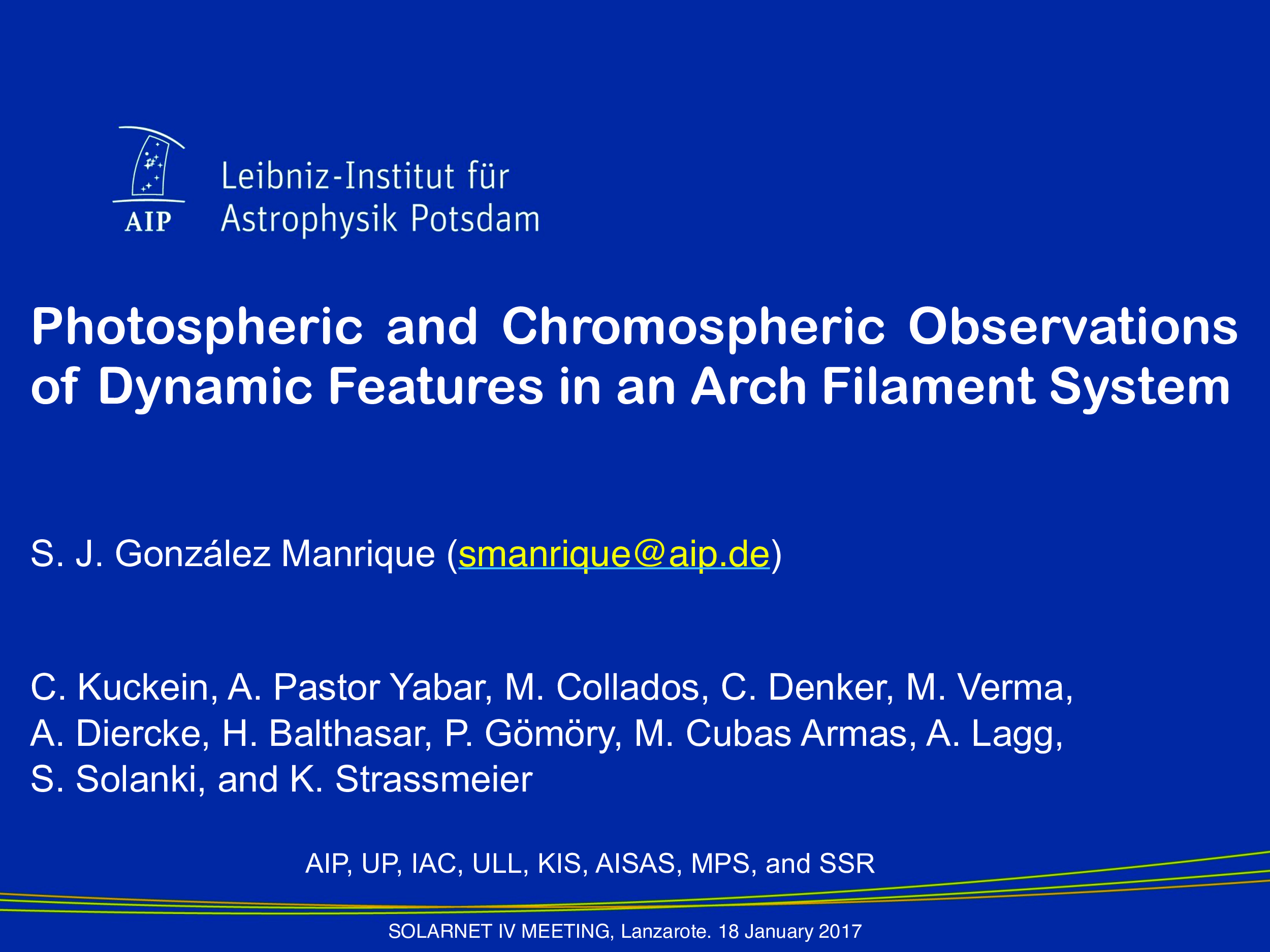Photospheric and Chromospheric Observations of Dynamic Features in an Arch Filament System
Co-author
S.J. González Manrique, C. Kuckein, A. Pastor Yabar, M. Collados, C. Denker, M. Verma, A. Diercke, P. Gömöry, H. Balthasar, M. Cubas Armas, A. Lagg, S.K. Solanki, and K.G. Strassmeier
Affiliation
Leibniz-Institut für Astrophysik Potsdam, An der Sternwarte 16, 14482 Potsdam, Germany
Main category
Natural Sciences (Astrophysics and Astrononmy)
Abstract
The new generation of solar instruments provides better spectral, spatial, and temporal resolution, which is essential to investigate the physical processes that take place on the Sun. High-resolution observations often show double- or even multiple-component spectral profiles. This is particularly true for observations of the near-infrared He I 10830 Å triplet. These spectral lines provide information on the velocity and magnetic fine structure of the upper chromosphere. We present observations of an emerging flux region (EFR), including two small pores visible in the photosphere and an arch filament system (AFS) in the chromosphere. The data were taken on 2015 April 17 with the very fast spectroscopic mode (~1 min for a full scan of 180 steps) of the GREGOR Infrared Spectrograph (GRIS), one of the post-focus instruments of the 1.5-meter GREGOR solar telescope located at the Observatorio del Teide, Tenerife, Spain. Simultaneous spectroscopic observations were taken with the GREGOR Fabry-Pérot Interferometer (GFPI) of the photospheric Fe I 6302 Å line. On the island of La Palma, the Swedish Solar Telescope (SST) observed the same EFR using the CRisp Imaging Spectro-Polarimeter (CRISP), which recorded spectropolarimetric data in the photospheric Fe I 6173 Å and the chromospheric Ca II 8542 Å lines. The observed AFS connects the two opposite magnetic polarities of newly emerging flux. Supersonic downflows up to 100 km s$^{-1}$ were measured in the He I triplet, which occur near both footpoints of dark filaments, whereas loop tops rise with about 1.5–20 km s$^{-1}$. The aim of this work is to track locations of high velocities within the footpoints of the arch filaments down to the photosphere. A special question arises, if the plasma contained in chromospheric structures, which exhibits supersonic LOS downflows near the footpoints of the AFS even reaches the photosphere.
Do you have problems viewing the pdf-file? Download presentation
here
If the presentation contains inappropriate content, please
report the presentation. You will be redirected to the landing page.
